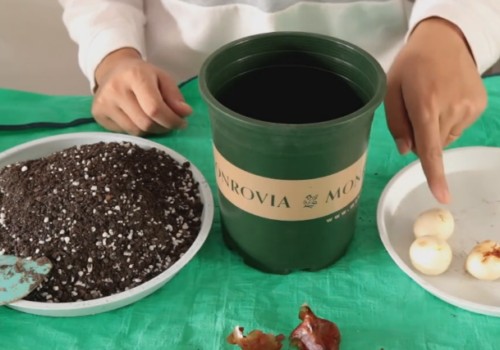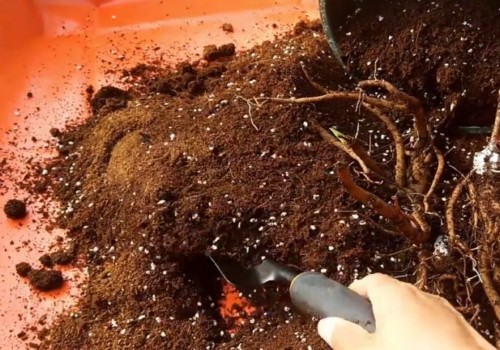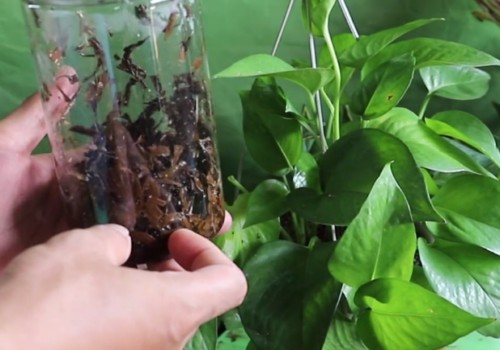Propagation method of Tulip bulb
Tulip is a very delicate and beautiful flowering plant, and there are many varieties, so the flowers and colors are also very rich. This kind of flower plant usually propagates by sowing and dividing balls. Today, the editor will share with you the method and process of tulip bulb reproduction. I hope it will be helpful to you.

First, the choice of planting balls
It is usually necessary to choose a seed ball that looks smooth and complete, and feels very full. Because such bulbs tend to be more capable of germination and grow better after emergence.
Second, the treatment of seeding balls
Before using the seed ball for planting, we need to soak the seed ball in carbendazim solution for sterilization. Because the ball will inevitably be infected with some harmful bacteria in the process of transportation or preservation. And drug immersion can kill most of the germs. Generally speaking, it can be soaked for about half an hour after being diluted with water according to the proportion of 1RU 1000. After soaking the seed ball, take it out to dry the water and plant it directly in the pot.
However, tulip bulbs generally need to be treated at a low temperature before they can germinate smoothly, but now tulip bulbs purchased from the flower market are generally treated in this step, so they can be directly cultivated in pots after disinfection and sterilization. Of course, if you are not at ease, you can consult the merchant before buying the ball.
III. Preparation of soil
The soil used to cultivate tulip bulbs must be fertile and loose, breathable and permeable, and should not be hardened. If the soil is too loose and easy to harden, it is often easy to inhibit the rooting and sprouting of the bulb. General use of general soil, peat soil, perlite, according to the proportion of 3:1:1 mixed and then used, so that the preparation of soil is not only loose, but also not easy to consolidate.
IV. Selection of flowerpots
Use flowerpots to plant tulip bulbs, flowerpots should be chosen well, originality should not be too large, nor should they be too small, generally use 1 gallon size flowerpots. If the flowerpot is too large, it often requires a large amount of soil, and it is easy to cause excessive dispersion of nutrients after pouring water and fertilizer; while if the flowerpot is too small, the amount of soil is often too small, the nutrients in the soil are less, and the nutrients are easy to be too concentrated after irrigation.
5. The process of planting
First of all, a layer of larger particles of ceramsite or stones or tiles on the bottom of the basin, and then cover a layer of soil. Then evenly sprinkle more than 10 grains of slow-release fertilizer as the base fertilizer, and then continue to cover a layer of soil, mix the fertilizer with the soil, and continue to fill the soil. Until the thickness of the soil reaches about 8-10 centimeters. Finally, put the tulip seed ball in the pot, usually put 3 seed balls in the flowerpot with a diameter of about 15 cm, and make sure the bud point of the seed ball is upward. After placing the seed ball, continue to fill the soil until it is 2-3 centimeters away from the edge of the basin.
6. Watering after planting
After planting the bulbs, pour water into the basin in time, and then you will find that some sinking will occur in the loose soil. So, we can continue to cover a layer of soil at this time. After watering, put the flowerpot in a cool and ventilated place for about half a month, which is more conducive to rooting and sprouting. Generally, after the emergence of flower buds, it is necessary to increase the light in time to ensure sufficient light, so that it can blossom smoothly.
Time: 2019-06-05 Click:
- Prev

When is the best time for peony grafting
In order to improve the flowering quality of peony, make its flower color richer, gorgeous, and higher ornamental value, we can usually improve the potted plant by means of grafting. After the grafting is completed, we need to plant it in the wet basin soil in time.
- Next

How to use tea to cultivate green pineapple
Green pineapple is not only large and thick leaves, luxuriant and greenish, so the ornamental value is very high, but also can effectively absorb harmful substances such as formaldehyde and toluene. And the family to raise green pineapple, the use of tea is a good little trick. Below
Related
- Fuxing push coffee new agricultural production and marketing class: lack of small-scale processing plants
- Jujube rice field leisure farm deep ploughing Yilan for five years to create a space for organic food and play
- Nongyu Farm-A trial of organic papaya for brave women with advanced technology
- Four points for attention in the prevention and control of diseases and insect pests of edible fungi
- How to add nutrient solution to Edible Fungi
- Is there any good way to control edible fungus mites?
- Open Inoculation Technology of Edible Fungi
- Is there any clever way to use fertilizer for edible fungus in winter?
- What agents are used to kill the pathogens of edible fungi in the mushroom shed?
- Rapid drying of Edible Fungi

